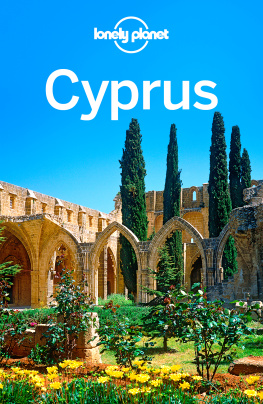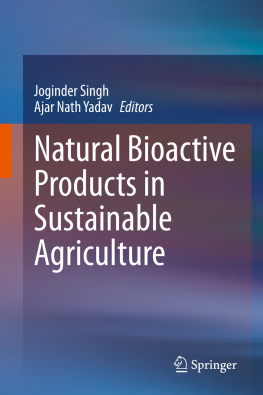NOTES ON AGRICULTURE IN CYPRUS AND ITS PRODUCTS
By W. Bevan
Director of Agriculture, Cyprus
The intention of these notes is to make available to those interested in the agriculture of Cyprus some of the information scattered in various reports, leaflets and correspondence not readily accessible to the general public.
It has long been a matter of regret to the writer that the valuable stores of information collected with so much care and ability by the late Mr. Panayiotis Gennadius, formerly Director of Agriculture in Cyprus, through having been published in Greek only, have remained beyond the reach of many who might otherwise have derived benefit from a study of his works. His writings on the general agriculture of the "Near East" are voluminous and comprehensive, and show an intimate knowledge of the subject as well as of the practices and customs of agriculturists in these regions. The results of his labours are mainly embodied in his Helleniki Georgia and his Phytologikon Lexicon, both of which are works of recognised authority. During his eight years (1896-1903) spent in Cyprus Mr. Gennadius devoted himself specially to a study of the agricultural conditions and needs of the Island, and the notes and reports made by him have been, to a large extent, taken as the basis of the present Notes.
During the sixteen years since he left the Island many changes have taken place, and the more receptive and enlightened attitude of the rising generation of farmers has helped to bring about various improvements, and a greater readiness has been shown to adopt modern methods. In compiling the present Notes I have drawn freely from the articles which have appeared for many years in the Cyprus Agricultural Journal (formerly Cyprus Journal), the official publication of the Agricultural Department, and which I have edited; I have also taken advantage of the very admirable and reliable information contained in the Handbook of Cyprus, edited by Messrs. Lukach and Jardine.
SKETCH MAP Of CYPRUS SHOWING DISTRIBUTION OF CROPS & FORESTS SKETCH MAP Of CYPRUS SHOWING DISTRIBUTION OF CROPS & FORESTS
I am greatly indebted to the willing assistance of Mr. Procopios Symeonides, Inspector of Agriculture, whose thorough acquaintance with local conditions and usages has enabled him to contribute much useful and informative material. I have also to offer my acknowledgments to Messrs. M. G. Dervishian, C. Pelaghias, Z. Solomides, G. Frangos, A. Klokaris, A. Panaretos and others who have kindly supplied me with data of various kinds.
It will scarcely be necessary to add that little more than a summary of the agricultural practice and resources of the Island has here been attempted, and in no sense does it pretend to be anything more. The aim has been to give the reader a general idea of what Cypriot agriculture is and, to some extent, what it is capable of doing.
I. GENERAL
Geographical Features
The Island of Cyprus is situated in the innermost basin of the Mediterranean Sea; about 40 miles distant from the Asia Minor coast on the north, and about 60 miles from Syria on the east, and 238 miles from Port Said to the south. It is the third largest island in the Mediterranean, ranking next to Sicily and Sardinia. The larger part of the Island is in the form of an irregular parallelogram, 100 miles long and from 30 to 60 miles broad; while on the north the eastern extremity runs out beyond this into a peninsula 40 miles long by 5 to 6 miles broad. The total area is 3,584 sq. miles. The main topographical features are the northern and southern mountain ranges running east and west and enclosing the great plain of the Messaoria. The mountains of the northern range are of an altitude ranging from 2,000 ft. to over 3,000 ft., the highest point being Buffavento, 3,135 ft.; those of the southern range are more lofty and culminate in Mt. Olympus, 6,406 ft. above sea-level. The rivers are nearly all mountain torrents, and are dry from about July to November or December.
The area of cultivated land is approximately 1,200,000 acres, and that of the uncultivated land 1,093,760 acres, of which about 450,000 are forest land and 320,000 are susceptible of cultivation. The Messaoria plain is the great corn-growing area.
Climate and Rainfall
There are considerable extremes of temperature in the plains. In summer it is very hot and dry with temperature ranging during June to September from 80 to 110 Fahr., while in winter slight frosts not infrequently occur. The climate is more equable, but also more humid, along the coasts. In the plains there is, during the greater part of the year, a marked variation between the day and night temperatures.
Official records show that for a period of thirty-two years up to 1915 the average rainfall for hill and plain for the whole Island approximated to 20 inches. Up to 1902 records were kept only in the six district towns, but since then there have been some fifty recording stations. The mean rainfall during the winter months for the twelve years ended 1914 was 18.55 inches. That for the whole year during the latter period was 21.18 inches.













